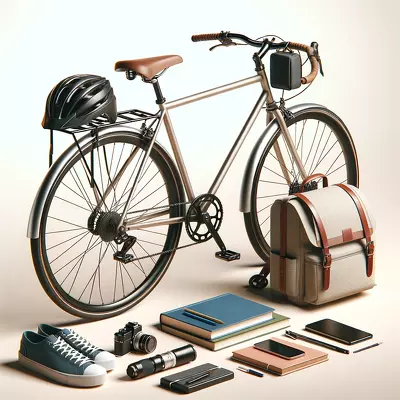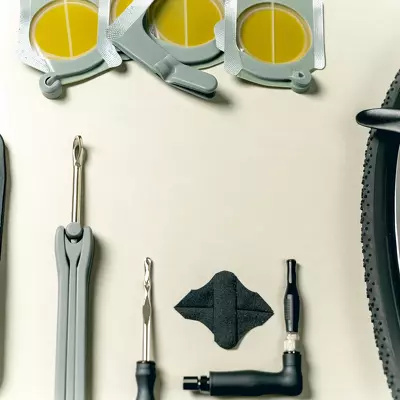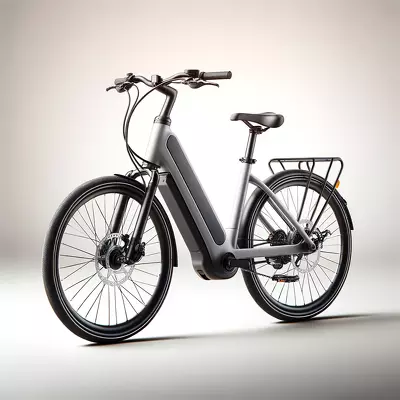
Selecting the best bicycle for college students is a pivotal decision that can significantly enhance campus life. A suitable bike not only facilitates easy navigation through the sprawling college grounds but also provides a reliable, eco-friendly mode of transportation for daily commutes. It embodies the perfect blend of convenience, health benefits, and sustainability, making it an indispensable asset for the active, environmentally-conscious student.
As an Amazon Associate, we earn a commission from qualifying purchases.
I. Introduction
Navigating through the bustling life of a college campus calls for a reliable, efficient mode of transportation. Bicycles stand out as a sustainable, health-conscious, and versatile option for students. They offer a unique blend of affordability, convenience, and the freedom to explore the campus and surrounding areas at one’s own pace. This article delves into the essential factors to consider when selecting the best bicycle for college students, reviews top models, and provides crucial maintenance and safety tips.
II. Factors to Consider When Choosing the Best Bicycle for College Students
A. Budget Considerations
The financial aspect is often the starting point for many college students when it comes to purchasing a bicycle. With a wide range of options available, from budget-friendly models to more premium offerings, understanding one’s financial constraints is key. It’s important to balance cost with quality, ensuring that the bicycle offers durability and reliability without breaking the bank.
B. Campus Terrain and Commuting Distance
The geography of a college campus can significantly influence the choice of bicycle. For campuses with varied terrain, including hills and rough paths, a mountain bike with sturdy tires and suspension might be ideal. Conversely, for urban campuses with smooth pavements, a road or hybrid bike could offer more speed and efficiency. Commuting distance is another crucial factor, with longer distances necessitating a more comfortable and efficient bike.
C. Storage and Portability
Given the limited living space in college accommodations, the bike’s storage footprint is an important consideration. Models that are easy to store and transport, such as folding bikes, can be particularly advantageous. Additionally, lightweight bikes are easier to carry upstairs or on public transportation, providing an added layer of convenience for the student.
III. Top Bicycles for College Students Reviewed
A. Huffy Stone Mountain
- Features and Benefits
The Huffy Stone Mountain bike is designed for durability and comfort. It features a robust steel frame, front suspension to smooth out uneven paths, and a range of gears to tackle various terrains. Its affordability and versatility make it a suitable option for students. - Pros and Cons
Pros include its cost-effectiveness, durability, and adaptability to different terrains. However, its heavier steel frame might be better for those requiring a lightweight option for easier transport and storage.
B. Schwinn High Timber Youth/Adult Mountain Bike
- Features and Benefits
This bike from Schwinn, a brand renowned for quality and performance, offers a blend of comfort and functionality. With options for aluminum and steel frames, multiple speed settings, and varying wheel sizes, it caters to a broad range of preferences and needs. - Pros and Cons
The bike’s strengths lie in its flexibility in configuration, reliability, and brand reputation. Its potential downside could be the price point for students on a tighter budget and the complexity of choices for inexperienced cyclists.
C. WEIZE Mountain Bike
- Features and Benefits
The WEIZE Mountain Bike stands out with its 18-speed gear system, high-carbon steel frame for enhanced durability, and dual full suspension for superior comfort on rough terrains. Its adjustable ergonomic seat adds to the bike’s appeal for extended use. - Pros and Cons
The bike’s high-carbon steel frame and comprehensive suspension system provide excellent durability and comfort, making it ideal for varied campus terrains. However, the bike’s weight and size pose challenges for compact storage and portability.
IV. Maintenance and Safety Tips
A. Regular Maintenance Checks
Keeping a bicycle in top condition requires regular maintenance checks. This includes periodic inspection and adjustment of brakes, tires, and gears, as well as timely lubrication of the chain. Such practices not only extend the bike’s lifespan but also ensure a safe riding experience.
B. Safety Gear and Precautions
Safety gear, including helmets, lights, and reflective clothing, is non-negotiable for any cyclist. These items significantly reduce the risk of injury and enhance visibility, particularly during night rides or in low-light conditions.
C. Theft Prevention Strategies
Investing in a high-quality lock and being mindful of parking locations are key strategies to deter theft. Utilizing bike racks in well-lit, high-traffic areas can further safeguard against potential theft.
V. FAQs
Q: What type of bike is best for hilly college campuses?
A: Mountain bikes or hybrid bikes with multiple gears are ideal for navigating hilly terrains, providing the necessary power and control.
Q: Can a road bike be used for daily commutes to college?
A: Yes, a road bike is suitable for smooth, paved surfaces and offers speed and efficiency for daily commutes on urban campuses.
Q: How often should I perform maintenance on my bike?
A: Regular maintenance, including a basic checkup and cleaning, should be performed at least once a month, with more thorough checks every 6 to 12 months.
Q: Are folding bikes a good option for college students?
A: Folding bikes offer excellent portability and storage solutions, making them a great option for students with limited living space or those who need to combine biking with public transportation.
Q: What safety gear is essential for college students biking on campus?
A: Essential safety gear includes a properly fitting helmet, lights (front and rear), and reflective clothing or accessories to increase visibility.
Q: How can I protect my bike from theft on campus?
A: For extra security, use a high-quality U-lock combined with a cable lock, park in well-lit and high-traffic areas, and consider registering your bike with campus security if available.
Q: Is Huffy a good bike brand?
A: Huffy is known for producing affordable bikes that are suitable for casual riding and beginners. They offer good value for those on a tight budget, though more serious cyclists might look for higher-end models.
Q: Are there any cheap fat tire e-bikes suitable for college students?
A: While fat tire e-bikes tend to be pricier due to their specialized design and electric components, budget-friendly models are available that offer basic features suitable for students. It’s important to research and compare models to find one that fits your needs and budget.
VI. Conclusion
A. Best Offer
The Schwinn High Timber Youth/Adult Mountain Bike emerges as the recommended product for college students. Its combination of quality, reliability, and versatility makes it suitable for various campus terrains and commuting distances. The brand’s reputation for durability further assures that it’s an investment worth making for the college years and beyond.
B. The Alternative
For students prioritizing budget and ease of use, the Huffy Stone Mountain Bike presents a viable alternative. While it may not boast the same level of sophistication as the Schwinn, it offers commendable performance and durability for day-to-day campus life, making it an excellent choice for those seeking value.
VII. Suggested Readings
Embarking on the journey of cycling through college life is not just about selecting the right bicycle; it’s also about embracing a lifestyle change that benefits health, environment, and mobility. To further enrich this experience, consider exploring the following books:
- “The Art of Cycling: A Guide to Bicycling in 21st-Century America” by Robert Hurst. This book offers a comprehensive look at cycling culture and practical advice for urban cyclists, making it a must-read for college students.
- “Bike Repair and Maintenance for Dummies” by Dennis Bailey and Keith Gates. An invaluable resource for anyone new to cycling, this guide demystifies bike maintenance and repairs, empowering students to take care of their bicycles.
- “Just Ride: A Radically Practical Guide to Riding Your Bike” by Grant Petersen. Petersen’s book cuts through the cycling jargon. It offers straightforward advice on how to enjoy cycling in its purest form, perfect for college student looking to integrate biking into their daily routine.
Exploring these reads can provide deeper insights into the cycling world, offering practical tips, maintenance advice, and a broader understanding of cycling’s role in sustainable living. Whether you’re a seasoned cyclist or just starting, these resources can enhance your biking experience during your college years and beyond.





